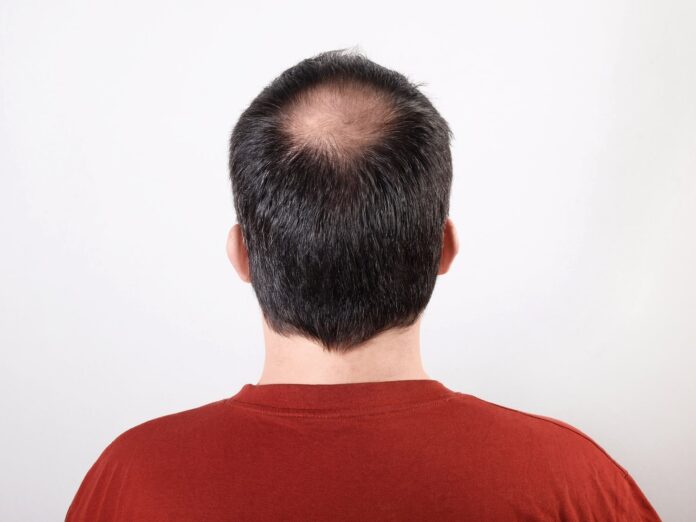Crown baldness, also known as vertex balding, refers to hair loss that starts at the back of the scalp, often forming a circular thinning area. This type of balding is one of the most common patterns of hair loss, especially among men, and is typically associated with androgenetic alopecia (male pattern baldness).
Hair restoration treatments have evolved significantly over the past decades, and today, Hair Transplant in Dubai is widely sought after as a reliable solution for addressing various types of hair loss — including crown baldness.
How Does Hair Transplantation Work?
Hair transplantation is a surgical method that involves harvesting hair follicles from a donor area — usually the back or sides of the scalp — and implanting them into thinning or bald regions. Two primary techniques are commonly used:
Follicular Unit Extraction (FUE)
FUE involves extracting individual follicular units directly from the donor area. It is minimally invasive, leaves tiny scars, and allows for a quicker recovery time.
Follicular Unit Transplantation (FUT)
FUT, on the other hand, involves removing a thin strip of scalp containing hair follicles, which is then dissected and implanted into the balding area. While it may leave a linear scar, it allows for a higher follicle yield in one session.
Both techniques can be effectively used to treat crown baldness, depending on the patient’s needs, scalp condition, and available donor hair.
Unique Challenges of Crown Baldness in Hair Transplants
Circular Growth Pattern
The crown area has a spiral or whorl pattern of hair growth, making it more technically challenging to recreate a natural appearance. The direction and angle of implanted hairs need to be precisely matched to blend seamlessly.
Lower Blood Supply
The crown receives relatively less blood flow compared to the frontal scalp, which may affect the speed of healing and graft survival. Skilled handling and proper post-care significantly improve success rates.
Progressive Nature of Hair Loss
Hair loss in the crown often continues over time. If transplantation is done too early, surrounding areas may continue to thin, resulting in a patchy appearance. Therefore, long-term planning is essential.
Is Hair Transplant Effective for Crown Baldness?
Yes, hair transplants can be very effective in treating crown baldness — when performed under the right conditions. Success depends on factors like:
- The extent of baldness
- Donor hair availability
- Patient’s age and expectations
- Surgeon’s skill and experience
While results in the crown may take longer to appear compared to the hairline, most patients observe noticeable improvement in density and coverage over 9 to 12 months.
Hair Growth Timeline After Crown Hair Transplant
| Timeframe | What to Expect |
|---|---|
| 0 – 2 Weeks | Scabbing, redness, and initial healing |
| 2 – 8 Weeks | Shedding of transplanted hairs (normal process) |
| 3 – 6 Months | Initial regrowth begins |
| 6 – 12 Months | Noticeable improvement in thickness and density |
| 12 – 18 Months | Full results with refined appearance |
Factors That Affect Crown Hair Transplant Success
Donor Hair Quality
Thick, healthy donor hair increases the chances of achieving denser coverage in the crown.
Graft Placement Precision
Because the crown has a swirling pattern, precise graft orientation is essential for a natural look.
Patient’s Hair Characteristics
Wavy or curly hair offers more coverage per graft than straight hair, making it easier to conceal thinning.
Post-Transplant Care
Following post-operative guidelines like avoiding strenuous activities and direct sun exposure helps protect the newly implanted follicles and ensures better growth.
Crown Hair Transplant vs. Hairline Transplant: Key Differences
| Aspect | Crown Area | Hairline Area |
|---|---|---|
| Hair Growth Direction | Spiral/whorl pattern | Forward and slightly downward pattern |
| Blood Supply | Comparatively lower | Better circulation |
| Complexity | More technically demanding | More standardized |
| Results Timeline | 12–18 months for full density | 6–12 months for noticeable change |
Suitable Candidates for Crown Hair Transplant
Not every individual is a good candidate for crown transplantation. Ideal candidates typically:
- Are above the age of 30 (stable hair loss pattern)
- Have sufficient donor hair at the back/sides of the scalp
- Do not have underlying scalp diseases
- Understand the realistic expectations of the procedure
An assessment of hair loss pattern, density, and future progression is crucial before proceeding with a crown transplant.
Maintenance After Crown Hair Transplant
While the transplanted hair is permanent, maintaining overall scalp and hair health is still important. Post-transplant care may include:
- Using mild shampoos
- Avoiding harsh chemical treatments
- Protecting the scalp from UV exposure
- Managing stress and diet for better hair health
In some cases, patients may be advised to follow supportive treatments like PRP therapy or medications to preserve existing hair around the crown.
FAQs
1. Does the transplanted hair in the crown fall out?
Yes, transplanted hairs typically shed in the first few weeks post-surgery, which is normal. They begin to regrow after about 3–4 months.
2. How long does it take to see full results in the crown area?
Crown transplants generally take 12 to 18 months for complete results due to the slower growth rate and complex pattern of the area.
3. Can crown hair transplants be combined with hairline restoration?
Yes, many individuals choose to restore both the crown and hairline during the same procedure, depending on donor hair availability.
4. Is crown baldness harder to treat than a receding hairline?
Yes, due to the swirling growth pattern and slower healing, crown baldness is more technically demanding to treat effectively.
5. WDoes Hair Transplant Work on Crown Baldness?ill I need another transplant in the future?
If hair loss continues to progress, especially in untreated areas, you might need touch-up sessions to maintain overall density.
Final Thoughts
Hair transplantation is a scientifically backed and effective solution for individuals experiencing crown baldness. While the crown area poses unique challenges, advances in modern techniques and a strategic approach to graft placement have made Hair Transplant a trusted option for achieving natural-looking and lasting results.
































